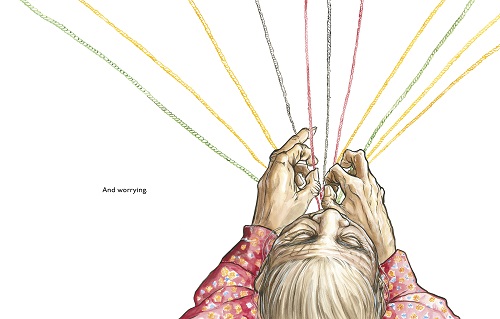What I’m Doing at Kirkus This Week,
Plus What I Did Last Week,
Featuring Weshoyot Alvitre and Duncan Tonatiuh
 August 9th, 2019 by jules
August 9th, 2019 by jules
— From Traci Sorell’s At the Mountain’s Base, illustrated by Weshoyot Alvitre
(Click to enlarge spread)
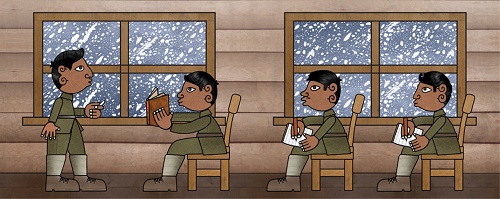
— From Duncan Tonatiuh’s Soldier for Equality: José de la Luz Sáenz and the Great War
(Click to enlarge spread and read text in its entirety)
Over at Kirkus today, I’ve got the first in a new board book series all about building confidence in young children.
That is here.
Last week, I wrote here about Traci Sorell’s At the Mountain’s Base (Kokila, September 2019), illustrated by Weshoyot Alvitre, and Duncan Tonatiuh’s Soldier for Equality: José de la Luz Sáenz and the Great War (Abrams, September 2019).
I’m following up today with art from each book. And bonus! Weshoyot also visits to answer some questions about illustrating At the Mountain’s Base, share some process images, and talk about some other current projects. I thank her for sharing. Let’s get to it. …
Jules: Can you talk about getting Traci’s manuscript and the challenges and joys of bringing the story to light via art?
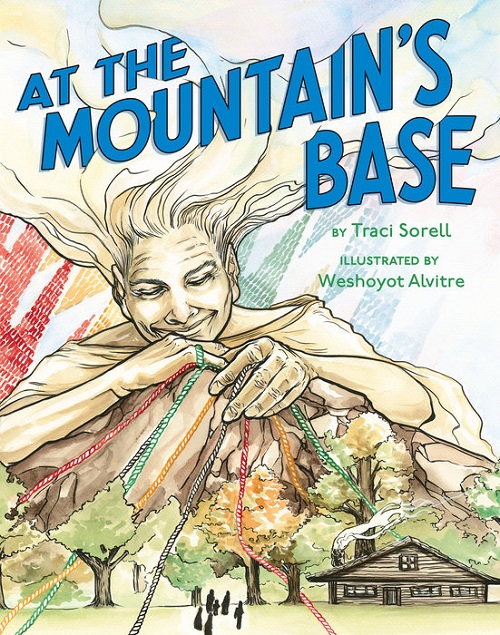
Weshoyot: I received her manuscript not knowing what to expect. I think I assumed I would receive a script like I normally get with my illustration and comic book work. What I received was a very short, but very powerful, small little poem. Before reading, I was, like, “wow, this is it.” I read it almost five times before responding. I was, like, “WOW.” I knew it was special. There was such movement in so few words — and this very effective circular story within it. My mind was swimming with the possibility to dissect it and the luxury of being able to sit with a single line and nurture the image that would come out of that carefulness. I had only been able to work with sparsity with my own writing, so I welcomed this opportunity.
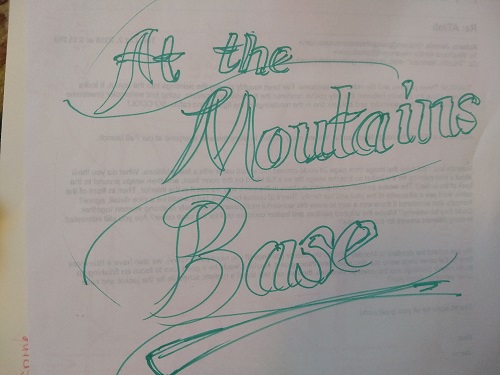

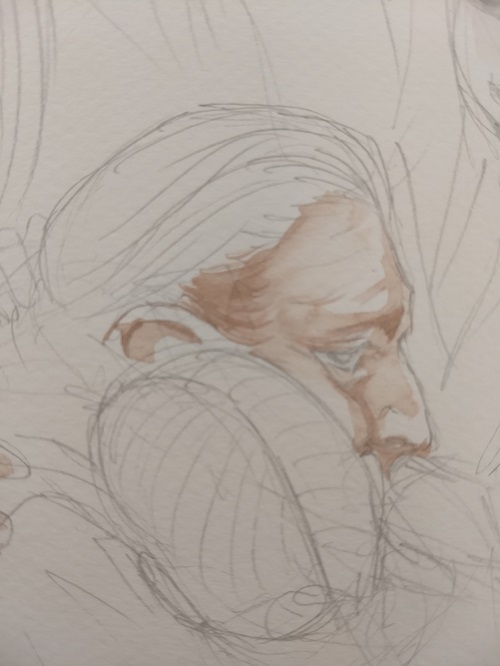
I think the most challenging thing for me on this book was taking the style I have and applying it to a less adult market. I was really concerned my art was not quite suited to a children’s book and that I needed to make adjustments to it somehow. I had children’s book illustrators I grew up with that were favorites of mine, and so I went back and revisited those to try to figure out what I loved and why.
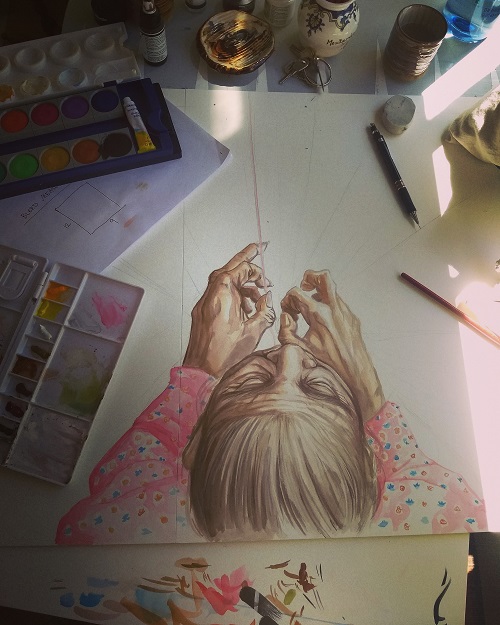
I think I was very uncertain until I did a painting for the pilot spread. That helped me to open up and to not be so concerned with the style — and just focus on having fun and telling the central theme of the story through the imagery. After that, I felt more comfortable with the rest of the pages, and think I managed an interesting style that’s a bit looser than my comic book work but still gives nods to that in the linework and panels we’ve created with the yarn designs. I think a sort of playfulness was key in the overall feel of the book — to counterbalance the somberness of mood of “worry” when family members are far and away.


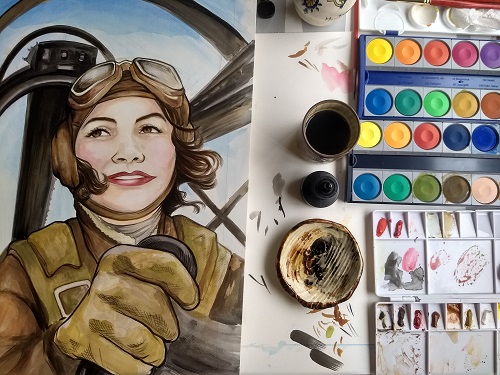
Jules: Can you talk a bit more about what it was like for you to work in the picture book form for the first time?
Weshoyot: Yes, this is my first official book for children. I’ve always had a curiosity of venturing into this world, but I’ve stayed in my comic book lane for the most part, just due to time and workloads. Sometimes I wish there were three of me — to take on all the projects I would like to do.
The upside to entering children’s books now was my familiarity with the printing and layout process from other books I have worked on. So, that repetitive organization kicked in early on, as 30+ pages is a bit intimidating when you first start. I was so excited to jump into this territory, though. I find that there’s a freedom here, in that you have sequential pages to do full imagined illustrations, instead of sequential images inside panels on a single page. I was a bit nervous and hesitant about those freedoms at first, because I am so used to laying out visuals in a panel-to-panel method. But when Namrata and Jasmin [publisher and art director] got excited about certain pages, especially large spreads, it helped me to feel more comfortable and confident in doing this.
Looking back, I find that the larger spreads are my favorite pieces. And I am constantly thinking of future projects in children’s books I would like to work on. This book was an amazing launch pad for me in the medium, and I hope to have the opportunities to do more in the future. Not only to stretch my art, but also because I have two children and we read every day.


Jules: These are watercolors, yes?
Weshoyot: It’s actually a mix of several different paints. I wanted to use a non-digital medium with this. I was trying to think of mid-century (1940-1950s) illustration work, colors, and feel when I was deciding on the style and medium I wanted to work with. I was so happy when Kokila encouraged me to pursue this as well. I have always loved to paint and have been wanting to experiment with gouache paints for some time. So, these paintings are done in a mixed media combination of watercolors, gouache, and various inks.
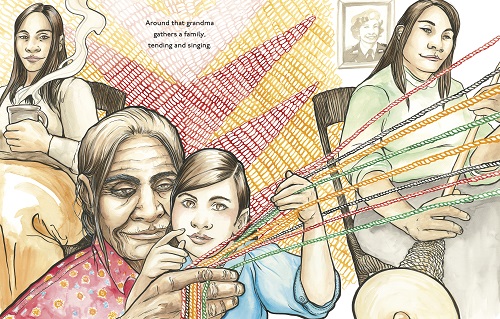
(Click to enlarge spread)
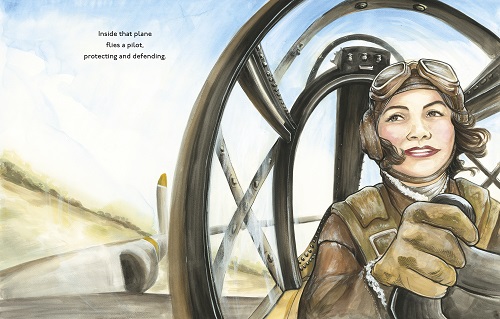
(Click to enlarge spread)
Jules: Speaking of Kokila, what was it like to work with them? (I think it’s exciting to see a new imprint like theirs.)
Weshoyot: When I first signed onto the project, I was under the impression it was actually just under the Penguin imprint. And then I found out, once I had signed on, that it was actually debuting under this new imprint called Kokila. When I heard exactly what this branch intended to do in offering representation, and after meeting Namrata to discuss it in person, I was so excited and felt so grateful to be part of this! I have been working with independently-owned publishers, such as Native Realities Press, for many years in order to provide representation in a market where there is little to none. To see this given the space to exist — not only safely housed and nurtured under a larger corporate imprint, but with support and interest from conferences and organizations nation-wide — is just something that did not exist when I first started in published work. I have seen so many shifts for the better, and I am so excited at the potential it has on positively impacting future generations.
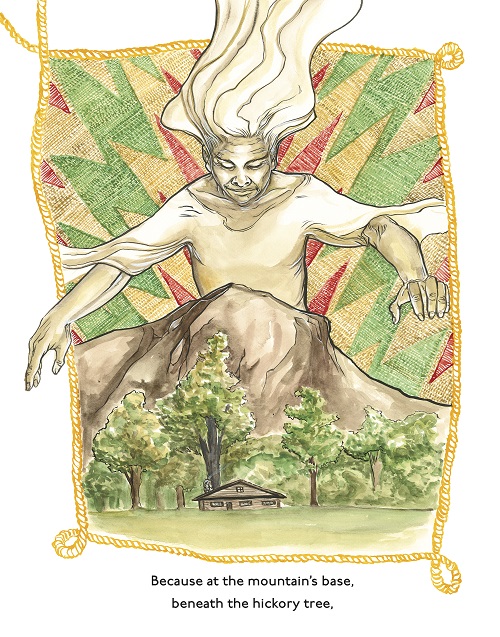
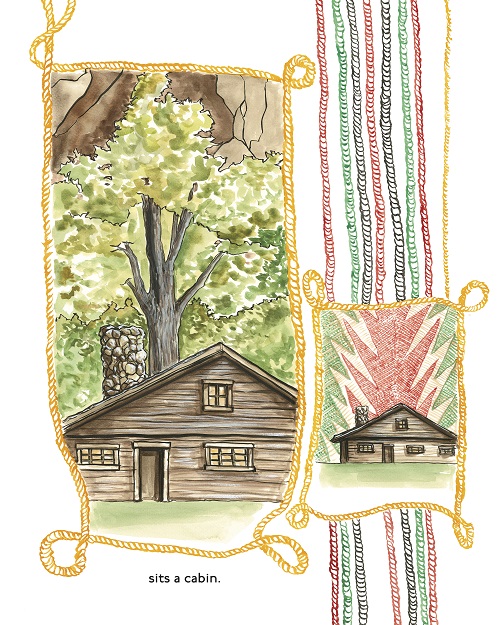
Jules: Can you talk about the Toypurina project?
Weshoyot: Certainly! The project has been a passion project of mine for years. But due to my schedule, professionally, it was slow-moving and not something I had time to flesh out. In 2017, I attended my first Indigenous Comic Con in New Mexico. I was on a few panels, and at the end of one of them a man in the audience asked me specifically if I had any dream projects. I told him my dream project was to do a graphic novel based on Toypurina, who was a Tongva woman living during the transition of Spanish occupation and the enslavement of the California Mission period. She led a revolt against the San Gabriel mission in 1785. This project was something I did not speak about, because for years prior there was no real way to pitch a piece of historical fiction and sell it, let alone have it be Native-centric with a female lead. In the slim chance you were able to get it published, there was no guarantee that you would be given the freedom to tell the story without censorship, editing, etc. And so I kept it close to my heart for many years, as I quietly tinkered away.

Jump to October 2018: I decided to use the popular artist challenge Inktober as a way to force myself to do some physical work in regard to this story. I produced 31 pages of original art and story, which was all sequential, to create a launch pad for the storyline. I had intended to create a sort of long teaser that would give readers enough information about what the graphic novel would tackle — but also serve as a way to introduce the character of Toypurina.
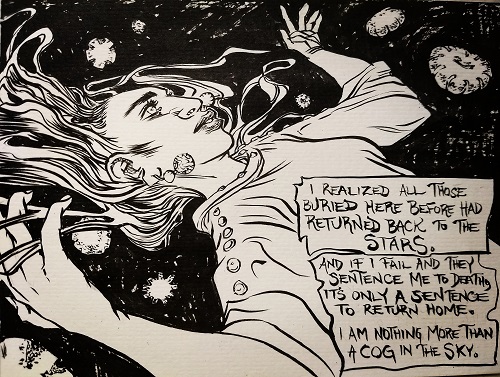
I hand-printed those 31 pages at Kinkos and hand-bound them into 50 books with burnished deerskin covers. I sold out and had so many people contact me with more interest. So, on May 22, 2019, the anniversary of her death in 1799, I launched the Kickstarter to fund a reprint of those original pages and to include some new progress towards what will ultimately be a long graphic novel. We exceeded our funding goal, and this is a project that will keep me busy for the remainder of this year — and well beyond. I feel a big responsibility in telling this story for our people.
Jules: Anything else you’re working on?
Weshoyot: I recently finished a graphic novel in partnership with a Pew Arts & Heritage Grant and The Library Company of Philadelphia. The book is called Ghost River: The Fall and Rise of the Conestoga [pictured below] and is written by Lee Francis. It gives an Indigenous perspective on the Paxton massacre in 1763, which almost completely wiped out the Conestoga people. There were so many similarities in this story to my own people, which made it often very emotionally difficult work. I am immensely proud of this book, which also features an educational platform through DigitalPaxton.org, which seeks to digitize material ephemera linked with this time period and event specifically. It should be available for pre-order this fall.
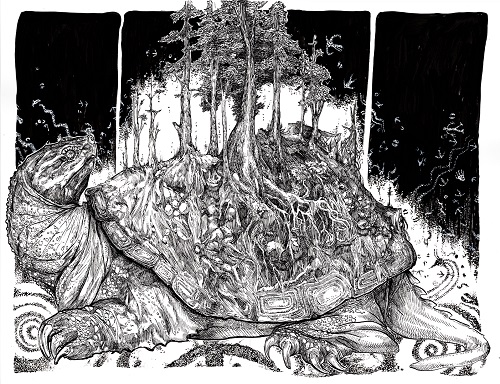
Thanks, Weshoyot!
Now, switching gears, here is some final art …
Soldier for Equality:
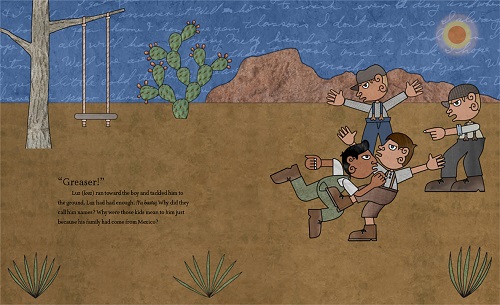
(Click to enlarge and read text in its entirety)
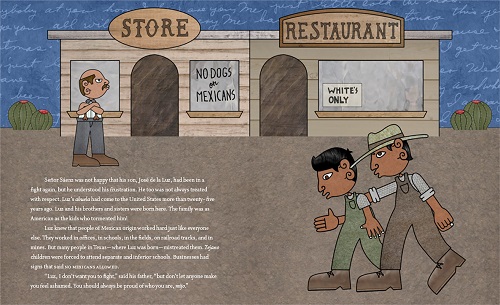
(Click to enlarge and read text in its entirety)

(Click to enlarge and read text in its entirety)

The soldiers were tightly packed belowdecks.”
(Click to enlarge and read text in its entirety)

‘we should create an organization that looks after the soldiers of Mexican origin
that fought in this war.'”
(Click to enlarge and read text in its entirety)
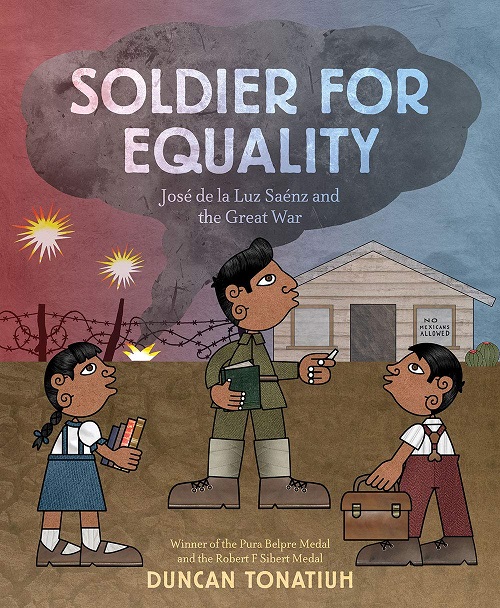
AT THE MOUNTAIN’S BASE. Text copyright © 2019 by Traci Sorell. Illustrations © 2019 by Weshoyot Alvitre. Final spreads reproduced by permission of the publisher, Kokila, New York. All other images reproduced by permission of Weshoyot Alvitre.
SOLDIER FOR EQUALITY: JOSÉ DE LA LUZ SÁENZ AND THE GREAT WAR. Copyright © 2019 by Duncan Tonatiuh. Illustrations reproduced by permission of the publisher, Abrams, New York.
